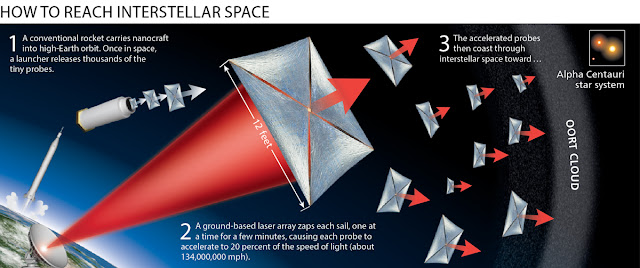The difference between Dark Energy and Dark Matter
Now you may ask "hey man, well you have briefed us about Dark Energy and Dark Matter but it just doesn't make the cut, just tell me the basic differences between the two the way they are...straight forward"
Well, the difference is the so-called equation of state. Aside from the fact that they're both called "dark", they're actually completely unrelated. They're both called "dark" because we don't observe them close up.

In other words, we don't know much about either one, though we're learning more every day. Hopefully, we'll reach a point soon where we can at least stop calling them by similar names, because they don't really have anything in common except being known only recently.
 |
| Would we ever know ? |
Well, the difference is the so-called equation of state. Aside from the fact that they're both called "dark", they're actually completely unrelated. They're both called "dark" because we don't observe them close up.
The equation of state determines the relationship between pressure (p) and energy density (). It’s
For dark matter, , which means that there is no pressure, .
For dark energy, . Yes, this means that pressure is negative: .
These numbers have consequences.
First, as the universe expands, the energy density of stuff with no pressure is “diluted” just as you would expect: Twice the volume means half the energy density. So the average density of dark matter in an expanding universe is decreasing. For , however, energy density remains constant over time even as the universe expands.
How come, you ask? Well, this has to do with the other major consequence. When self-gravity works on stuff with positive pressure, it does work by compressing that stuff, increasing its pressure, its ability to do mechanical work. When pressure is negative, the opposite happens: under the influence of self-gravity, the stuff expands, almost as though it was antigravity. (But it’s not as mysterious as it sounds. Bubbles in the sea rise because of gravity, too.) And where does the work done by gravity go? Well… it creates more dark energy. Hence dark energy’s energy density does not change.
In sum, dark matter and dark energy have fundamentally different behavior and play fundamentally different roles. As to what they are made of… dark matter may be a new kind of weakly interacting massive particle (WIMP). Dark energy is more mysterious: it could just be the so-called cosmological constant, it could be vacuum energy (but if it is, its value is off by dozens of magnitude), or it could be a potential associated with a new kind of field. We simply don’t know. We infer the existence of these things from cosmological observations, but we have yet to see any direct evidence.
Now let me explain it like explaining it to a basic highschooler !
Dark matter participates in gravity, and perhaps the weak force, but not the electrical force. That means it doesn't interact with light in the usual way, so we can't "see" it. We observe it in the way the galaxy moves: stars at the rim of the galaxy move so fast that they would be flung out of the galaxy if something weren't holding them in. We also see it in distant galaxies, when they collide: we can see it keep on moving even as the stars smash into each other. (Light interacts with gravity, a bit, and we can see that if something is big enough.) But we don't really know what it is.
Dark energy works on even bigger scales. Where dark matter attracts things, dark energy pushes them away. The farthest galaxies are moving faster than expected, and accelerating. We have no idea what dark energy interacts with. It's probably even less powerful than dark matter, but there's a lot more of it, so the effect is bigger.
Dark energy works on even bigger scales. Where dark matter attracts things, dark energy pushes them away. The farthest galaxies are moving faster than expected, and accelerating. We have no idea what dark energy interacts with. It's probably even less powerful than dark matter, but there's a lot more of it, so the effect is bigger.

In other words, we don't know much about either one, though we're learning more every day. Hopefully, we'll reach a point soon where we can at least stop calling them by similar names, because they don't really have anything in common except being known only recently.
This is gonna be my last post related to Dark Energy and Dark Matter for now. I will soon post something related to them in the near future or when i get enough queries, but that's it for now. Don't forget to subscribe my blog and visit my blog regularly for more!
Ciao!



Comments
Post a Comment